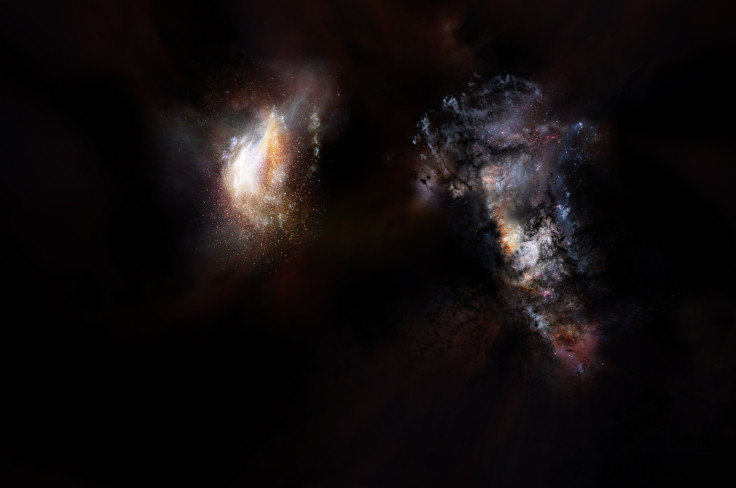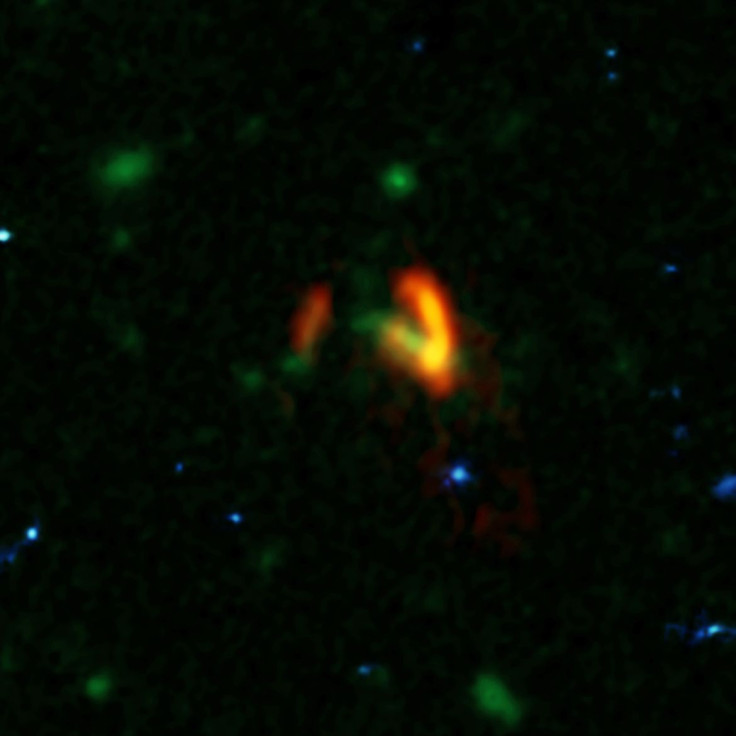Dark Matter Halo Around Massive Primordial Galaxies Pushes Standard Cosmological Model Limits

The more we look at the universe, the more we find things that we struggle to explain with our current theories of science. And every once in a while, we come across something that is remarkably unusual but is still within the ambit of the standard cosmological model, even if only just about.
The discovery of a pair of gargantuan primordial galaxies, which existed when the universe was less than one billion years old, is in that latter category. With a combined mass of about 313 billion suns and originating just 780 million years after the Big Bang, the pair — called SPT0311-58 — pushes against the limits of how scientists understand galaxies to have formed, especially in the early universe.
Other than their own phenomenal mass (273 billion and 40 billion solar masses), they are also thought to exist in a halo of dark matter that envelopes them. This halo is far more massive, with at least 1 trillion times the mass of the sun. For reference, our galaxy, the Milky Way, has a mass of about 580 billion suns.
"Either of these galaxies on its own would be extreme, and here you have two of them together," Chris Hayward from the Center for Computational Astrophysics at the Flatiron Institute in New York City, who is also a coauthor of the paper on the discovery, said in a statement Wednesday. "This is really pushing the limits of just how massive a dark matter halo can be at this time in the universe. This is one of the rarest and most extreme clumps of dark matter in the universe," he added.
Astronomers expect primordial galaxies, such as the two that make up SPT0311-58, to be about the same mass as present-day dwarf galaxies in the nearby universe. These smaller galaxies in the distant, early universe were thought to be the building blocks for larger galaxies that now form the bulk of visible matter in the known universe.
Finding SPT0311-58 shows that primordial galaxies could come together to form massive structures within a relatively short period of time after they came into existence themselves, during the epoch of re-ionization. The epoch, roughly referring to between 150 million and one billion years after the Big Bang, was when the neutral hydrogen in the universe became ionized, allowing light to move freely through space and making it visible.
"With these exquisite ALMA observations, astronomers are seeing the most massive galaxy known in the first billion years of the universe in the process of assembling itself. We usually view that as the time of little galaxies working hard to chew away at the neutral intergalactic medium. Mounting observational evidence with ALMA, however, has helped to reshape that story and continues to push back the time at which truly massive galaxies first emerged in the universe," Dan Marrone from University of Arizona in Tucson and lead author on the paper, said in a statement, referring to the Atacama Large Millimeter/submillimeter Array of radio telescopes in Chile.
The ALMA observations were a refinement of data originally collected by the South Pole Telescope in Antarctica, which had mistakenly identified the pair as a single source of light. It was thought to either be a small source, greatly magnified, or a large source that was lightly magnified, the magnification happening due to gravitational lensing — the bending of light coming from an object in the background, due to the gravity of a foreground object.

Based on the ALMA data, when the researchers first calculated the background object to be a single source of light, Hayward thought their workings were wrong, because of how massive SPT0311-58 seemed to be.
For a sense of perspective, a comparative extreme structure (of a galaxy pair and dark matter halo) in the present-day universe would have the mass of about 10,000 trillion suns.
"There are probably just a handful of objects like this in the whole sky, we’re lucky to have found it," Marrone said. "Our hope is to find more objects like this, possibly even more distant ones, to better understand this population of extreme dusty galaxies and especially their relation to the bulk population of galaxies at this epoch. In any case, our next round of ALMA observations should help us understand how quickly these galaxies came together and improve our understanding of massive galaxy formation during re-ionization," he added.
The research was published in the journal Nature in a paper titled "Galaxy growth in a massive halo in the first billion years of cosmic history" which appeared online Wednesday.
The finding of a quasar and a supermassive black hole inside it, from a mere 690 million years after the Big Bang, was also reported Wednesday. It also raises new questions about the fundamental physics underlying the evolution of the universe.
© Copyright IBTimes 2025. All rights reserved.





















